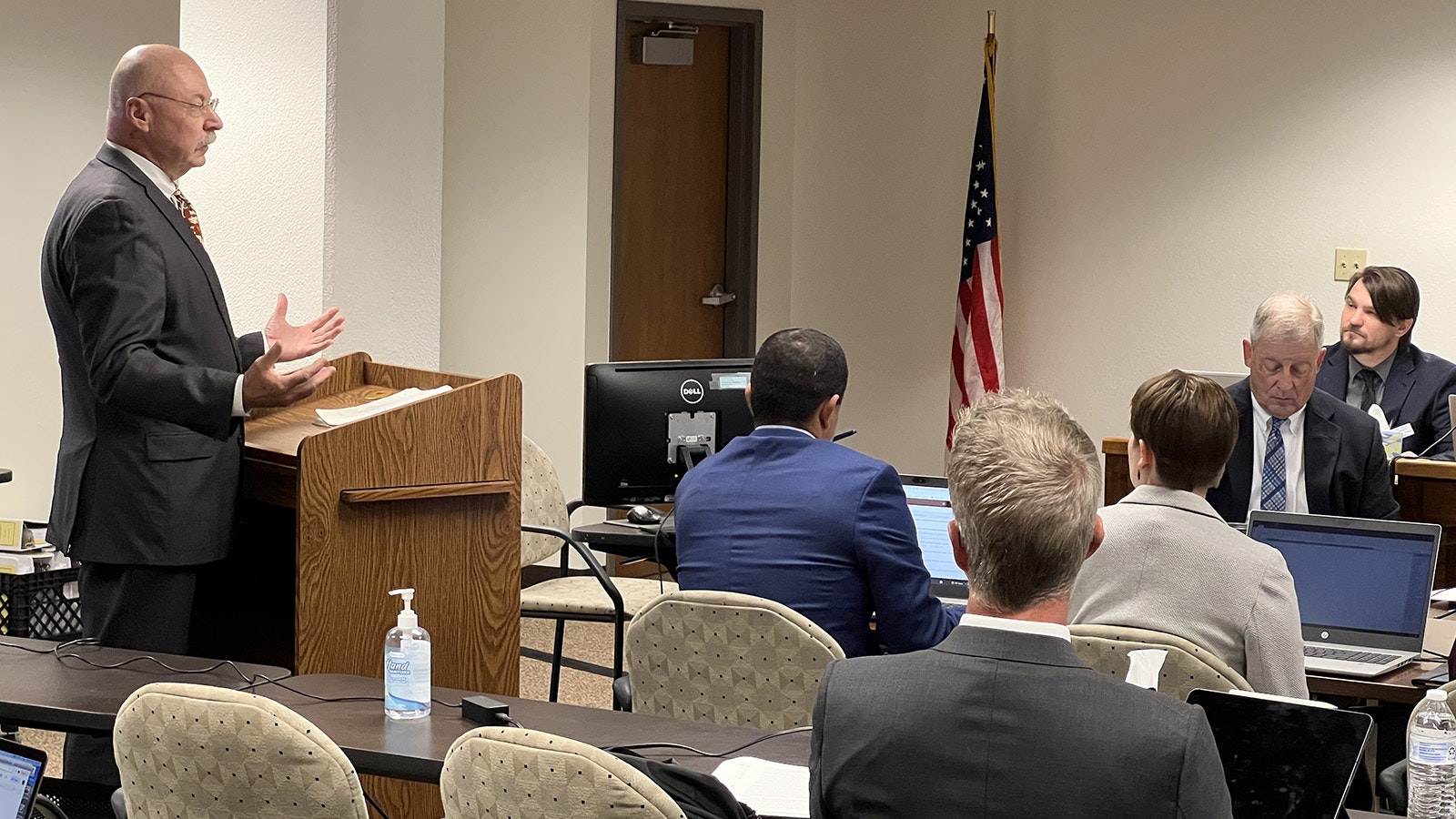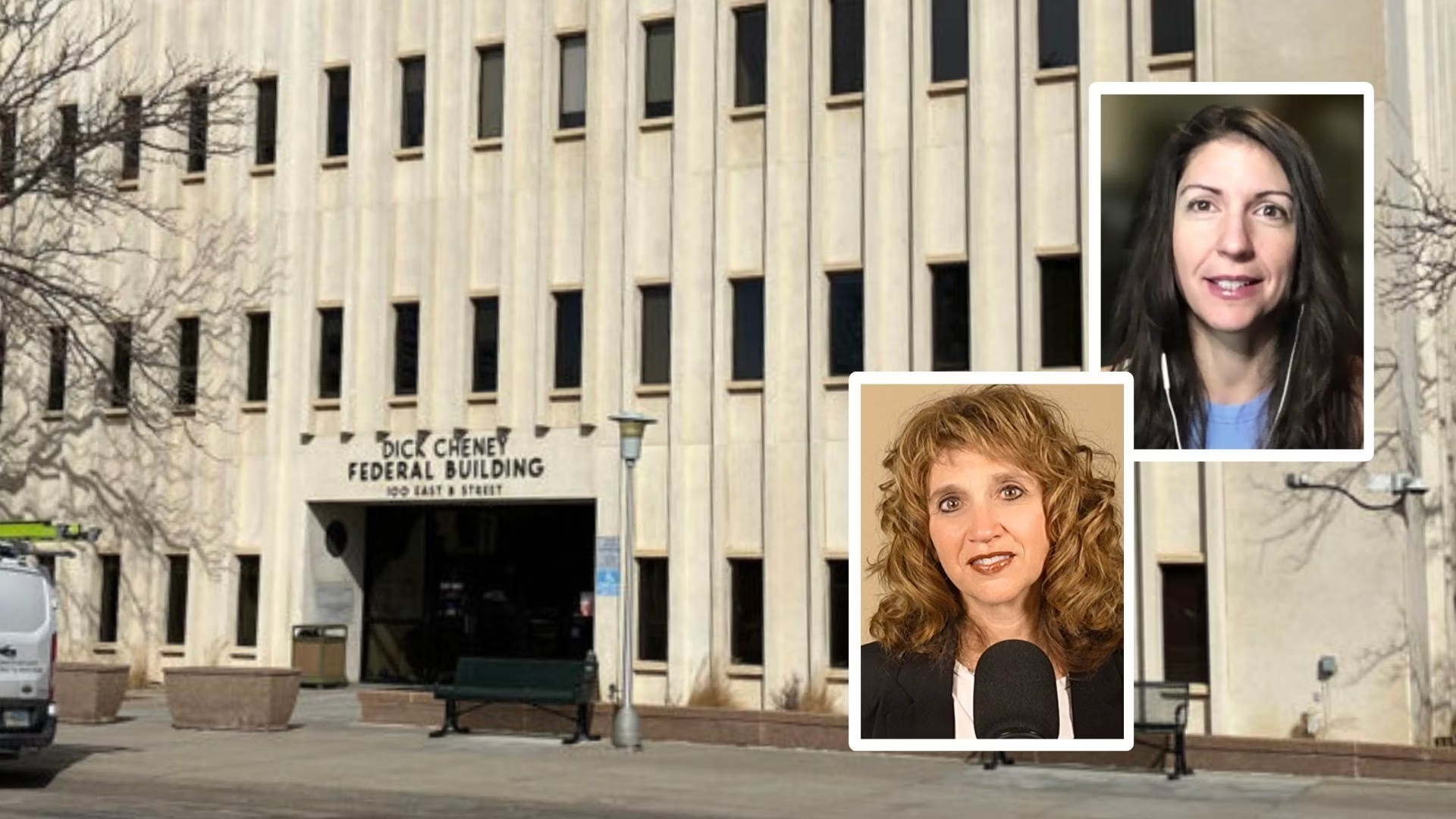CHEYENNE — Days that can be extremely hot or cold have become increasingly more difficult for power providers to manage in Wyoming and other states across the West.
The reasons for that are twofold, PacificCorps Manager of Net Power Costs Ramon Mitchell told the Wyoming Public Service Commission during a recent seven-day marathon hearing into a 30% rate increase RMP wants.
The rate hike includes a 21.9% overall increase and a 7.6% temporary bump to recover unexpectedly high fuel costs.
The first change Mitchell testified about was the introduction of something called the Energy Imbalance Market, which began in November 2014.
EIM allows utilities to make automated transactions of the lowest-cost energy available to serve real-time customer demand. It’s seen as a necessary tool for integrating renewable energy.
But that’s only part of the reason why RMP needs to charge more, Mitchell said.
The second change is an increasing number of extreme weather events going back to at least 2020, which are leading to demand spikes, Mitchell said.
“Utilities across the industry, across the West, are getting, have a lot of uncertainties these days, as to when these events show up,” Mitchell said. “And so that uncertainty, to simplify it, causes you to hoard energy, because it’s imperative that each utility ensures they have enough to serve their customers.”
That’s made the extremely hot days and cold days harder to manage, Mitchell said.
“With wind and solar volatility, and as those resources proliferate across the West, utilities have this great amount of uncertainty, and it causes them to hoard energy,” he said. “And when they hoard energy, of course no one wants to let go of that energy. They don’t want to sell it, because they need to ensure that they’re able to provide reliable service for their customers.”
RMP Would’ve Asked For More Without Renewables
Improving that situation is what two large transmission lines going up in Wyoming, as well as additional wind energy resources, are all about, PacificCorps Vice President of Resource Planning, Procurement and Optimization Rick Link told commissioners.
The Integrated Resource Plan developed by Rocky Mountain Power, which is an operating division of PacificCorps, showed a 1.89-gigawatt deficit by 2025, Link said. That prompted the company to send out a request for proposals for new generation resources.
That was a competitive bidding process that didn’t just consider renewables, Rocky Mountain Power CEO Gary Hoogeveen said in his testimony.
“This diversified generation portfolio was driven by economics,” he said. “Not any specific state’s policies. They were procured through competitive solicitation processes that weren’t limited to renewable generation.”
The Gateway South Line is going to integrate 1,600 MW of zero fuel-cost renewable generation, Hoogeveen added, and in the test year will provide $12 million in net benefits for three months of operation.
Coal and gas remain 60% of the company’s generation, with no plans to retire any more coal plants over the next decade, Rocky Mountain Power told the PSC. Both fuel sources are seen as essential in smoothing out fluctuations in renewable energy sources, providing reliability.
But in the next two years, Rocky Mountain Power will build out $10.6 billion in new infrastructure that will include wind generation and the Gateway South transmission line.
Despite the high price tag for that, Rocky Mountain Power has pushed back on the idea that renewables are what’s driving its 30% rate hike.
Hoogeveen, Link, and other witnesses told commissioners that the ask would have been $85.4 million higher this time around without renewables. It’s the broader market that’s driving costs up, Rocky Mountain Power officials said. In fact, 95% of the rate increase is due to increased energy costs during times of peak demand.
Driving Case Crazy
All the rhetoric surrounding renewables has been driving Sen. Cale Case, R-Lander, crazy. That includes the argument Wyoming people aren’t paying to deliver power to other states.
Case was one of five intervenors on Rocky Mountain Power’s rate case with the PSC.
“This case is not about renewables,” Case said. “And that’s just not really true when we separate all the rhetoric and try to put the big picture together. We’re changing the way we deliver electricity in the country, and it has implications.
“It’s important to move to a low-carbon future, but it has huge implications as to the cost of providing electric service. That’s more entwined with this case than anybody really wants to address. It takes an astounding cost to integrate renewables into providing safe, secure, efficient electric services.”
Renewables can offer some hedges against price spikes on the traditional energy market, Case said. Like when Russia invaded Ukraine, which forced Europe to switch its coal plants back on. That started a spike in coal prices, which was then further exacerbated by a coal mine fire in Utah. That spiked PacificCorps’ coal costs by 29%, company officials testified.
In a scenario like that, wind power generation is not a bad thing with its short-run marginal cost of zero, Case said.
“It’s literally zero,” he said. “It’s free. It’s free as long as it’s not free. And it’s not free when it’s not running.”
Then it has to be replaced, sometimes with something that’s expensive.
“The rhetoric around that just drives me crazy, when we don’t acknowledge that there are significant implications,” Case said. “I’m not saying they’re not worth doing. I’m saying we have to acknowledge the significance.”
Wyoming Ground Zero For Renewable Energy Demand
The West Coast states — Oregon, Washington, California — all prioritize renewable energy in their portfolios. But what they don’t want are huge wind towers in their viewsheds.
That’s why Wyoming has become ground zero for providing renewables to the West Coast, Case said.
“It has enormous implications for our tax structure, enormous implications for our environments, for species, for beautiful landscapes,” he said. “It’s gigantic. Wyoming will never be the same.”
Case feels that putting wind towers in Wyoming is different here.
“Wyoming has landscapes that have been undisturbed since the last ice age,” he said. “That’s different than putting them in Iowa, on places that were once forested then farmed and is now farmed in conjunction with wind towers and transmission lines. It’s different. It changes everything.”
Case is worried about the impact to Wyoming tourism.
“We have the most dramatic and wonderful business in the Lower 48 states,” he said. “And we will suffer because of this, and we will get very little for it. And especially very little when you compare that back to the fossil fuels that we still produce perhaps in lesser quantities and with certainly a diminished future.”
That leaves Wyoming residents paying twice, Case said. Once through their electric bills, and again with their own environment.
“If I achieve anything in this case, it’s that we acknowledge that renewables are expensive, and they are deriving changes in the sale of electricity,” he said. “They’re impacting Wyoming.”
Who Pays What
Gateway South and Gateway West D1 are both being allocated to PacificCorps’ overall energy system. That means Wyomingites will be responsible for 15% of their cost.
Rocky Mountain Power says Wyoming ratepayers will benefit from the infrastructure. The 500-kilovolt lines will upgrade 230-kilovolt lines that have been an area of constrained capacity for many years. They’ll also allow, for the first time, energy to flow into Wyoming, if need be, rather than it always flowing out.
Gateway South also ensures the company isn’t risking compliance with reliability standards, Link testified.
Without Gateway, an outage in any one of the three 230 KV lines that go from eastern to central Wyoming resulted in curtailment of power on the system.
Part of that is the age of the system, testified Rocky Mountain Power Vice President of Transmission Rick Vail.
“Thank of it as basically skinny wires,” he said. “A lot of the benefits of Energy Gateway is, you know, you’re bringing in a 500 KV transmission line. That obviously can handle much more capacity.”
However, the fact that Wyoming’s load percentage is dropping 0.5% on the overall system, yet its rates are going up 30%, feels inconsistent to many of the state’s rate payers.
“We urge the commission to push back against the idea that renewables don’t have anything to do with the extraordinary rate increase,” Petroleum Association of Wyoming President Pete Obermueller said.
While paying 15% of systemwide infrastructure seemed fair in the past, the Gateway transmission lines feel like something different, Case said.
“Rocky Mountain Power is bending over backwards to try to find reasons that say the transmission line will benefit Wyoming,” he told Cowboy State Daily. “But we got along pretty well a lot of years shipping a lot of power out of here without new transmission Iines. The real reason they’re being built is to take wind out of Wyoming, and immense amounts of wind.”
States that want renewables in their portfolio need more real skin in the game, Case said. Otherwise, Wyoming is giving up too much for too little.
“You go to Washington, Oregon, and you go to the east side, it looks a lot like Wyoming, Case said. “So, there’s lots of room for wind, but they just don’t want it. They’re gonna stick it to us and not pay us for it.”
Read more
This is the second in a series unpacking the major issues raised in a seven-day marathon rate increase hearing for Rocky Mountain Power. Other stories:
Wyomingites Say They Can’t Afford Rocky Mountain Power’s 30% Rate Hike
Renée Jean can be reached at renee@cowboystatedaily.com.





